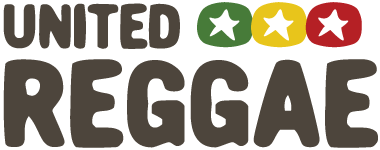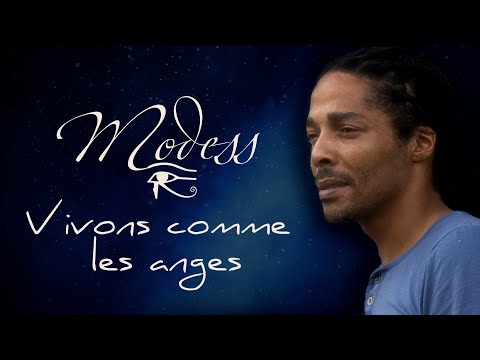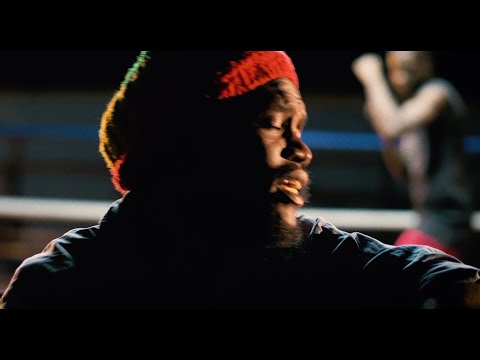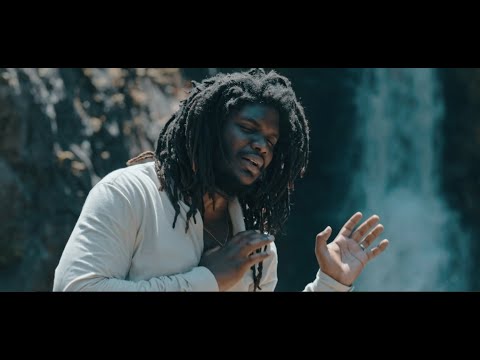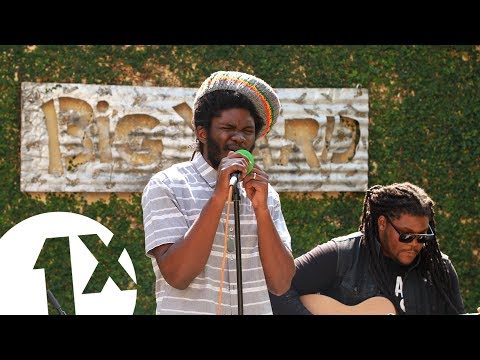Articles about reggae music, reviews, interviews, reports and more...
Interview: Fil Callender (Part 2)
- Home
- Articles
- Interviews
- Interview: Fil Callender (Part 2)

Interview: Fil Callender (Part 2)
"I wanted to build my own group and pursue my own recordings"
Read part 1 of this interview.
In part 2 of our interview with Fil Callender, OD, he talks about some of the famous rhythms he played on and how he left Studio 1 to start his own band the In Crowd.
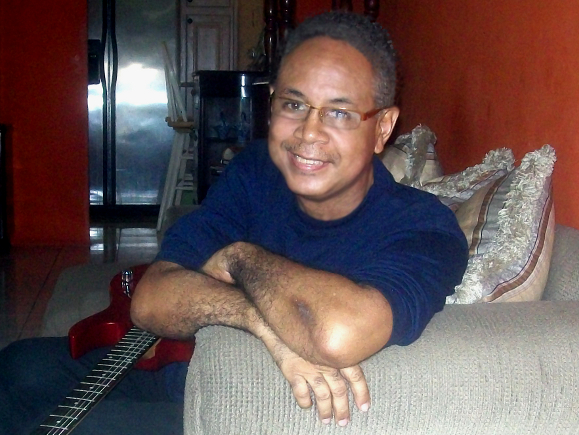
We could be here all day talking about the songs and rhythms you drummed on but I’m just going to pluck a few from the air. Tell me a bit about playing on Real Rock in 1968.
OK, Real Rock came about when me and Eric Frater, Patrick McDonald, Boris Gardiner and Jackie Mittoo played on that song. What was the name of the singer? He did Armagideon Time.
Willie Williams?
Willie Williams. It was a backing rhythm for Armagideon Time later on [in 1978]. The rhythm was so exciting and I remember I was bowled over. I don’t remember if it was the same day but Trommy Trombone Vin Gordon, they got him to come in and do an instrumental. I think it was Coxsone recorded it because Coxsone was involved in arrangements like that. He would do things like that, you know? Just get an idea and be like “Why don’t you use Trommy on this one? I think he would do good”. Very few times he’d come in and make an input and say something, or he might say it after the session was done or he might just say it to Jackie Mittoo. So Vin Gordon came in and blew on the rhythm and the rest was history, but I think Coxsone coined the name Real Rock.
How about playing on Satta Massagana in 1969?
OK. That was a fascinating story. It was recorded at Coxsone’s studio but not produced by Coxsone. It was the Abyssinians themselves who produced that session. Those guys are brilliant, I tell you. A lot of those musicians and those artists were very poor, you know, and when they’d come they’d barely have money for lunch and all of that. The Abyssinians, I think they came several times and returned back, but anyway, they got enough money to book a session. It was an album they were doing and they booked the session and the first song was Satta Massagana. It was musicians like Eric Frater again, Leroy Sibbles played the bass that time, Boris Gardiner had left, Robbie Lyn played the keyboard because Jackie Mittoo had migrated also.
Sometimes there are some little misconceptions in terms of the history and who did play on what, so some people think it was Jackie Mittoo but it was actually Robbie Lyn on piano, myself on drums, Leroy Sibbles on bass, Eric Frater on guitar. Just four of us playing the rhythm section and the horn section, Vin Gordon and the same sax guy, Deadly Hedley. So it was actually the Abyssinians who booked the studio and we played on the rhythm. But the rest was history because it’s a brilliant, brilliant Rasta anthem, and you know what happened after with that song. At the time Coxsone had.. I think the Abyssinians… I don’t want to say the wrong things… but I think there was a problem with some payment.
 Of all the great, outstanding musicians; Jackie Mittoo undoubtedly was the most brilliant
Of all the great, outstanding musicians; Jackie Mittoo undoubtedly was the most brilliant
Yes, they say they were paid very little.
So Coxsone had the rhythm in the studio. He had it on the shelf there for a long time. Eventually I think the Abyssinians got enough money to get back the tapes and they put it out. So it didn’t come out at the same time, but when it came out it became an instant hit.
And one of the things I read… this is a history that I read, I myself didn’t witness this… there were a few engineers that came out of Coxsone, including Errol T who died, who worked with Joe Gibbs. That was his schooling – Sylvan taught him. But I don’t remember which engineer it was but I was already aware that an engineer took the Satta Massagana dubplate because the rhythm was so exotic, he cut a dubplate with the bass and drum alone, me and Leroy Sibbles, because in those days it was just two tracks so you never had this proper separation of instruments like on the four track or whatever. So with the two tracks he cut the dubplate. You could hear the guitar and the keyboards bleeding through a little bit, so that contributed to a sound like a nice dub mix.
It made its way to some of the sound systems and the rest was history because what I understand is that the sound systems were responsible for getting Satta Massagana out on a hit because it actually never got a lot of radio play at the time but eventually it did. There are a lot of stories behind that.
I want to ask you one more thing about that rhythm because people have pointed out the similarity between the horn melody and the Neal Hefti score for the Batman TV series. Have you ever heard that?
No, I never listened to it. That’s amazing!
I did an interview with the writer Chris Lane who thinks it’s probably something that was picked up subliminally rather than a direct inspiration.
I need to look that up, I didn’t know. Let me just write that down.
The other one I wanted to ask you about was Hot Milk from 1969.
Hot Milk was Jackie Mittoo. I think the original rhythm was a vocal thing. I think it was a Heptones song. I was a part of the Heptones’ On Top album and I think it was part of one of those Heptones songs.
Sea Of Love?
Jackie Mittoo used to do a lot of that – play instrumentals over some of the instrumentation that were some of the vocal hits, and that’s how Hot Milk came about. We would lay a rhythm down and he’d recognise that it was a nice rhythm and right away he’d go about doing some kind of version of it over. So I think that’s how Hot Milk came about.
 I was just at the right place at the right time
I was just at the right place at the right time
It’s quite an interesting drum pattern.
Oh yes. Thanks. I tell you, I was influenced by Jackie Mittoo in lots of ways. Most of the musicians that played with him were inspired a lot. For instance if we were doing a session and it’s not going right, like some days you feel a little stale, playing a little lazy or so, he would do things to kind of liven up the studio, the session.
I remember one day, I don’t remember what the song was, but it influenced my drum style a lot: we were playing and then he said to me “Drummy, Drummy, you know I feel the rhythm, you know I feel it, you know? The rhythm is a lively rhythm, you have to move and liven up the rhythm and feel it, man. You have to move a little faster”. He says “Just imagine a big fat woman dancing to this rhythm” and he starts to demonstrate it. Jackie Mittoo was a skinny guy, you know? He’s trying to emulate, to show me what a big fat woman would look like dancing to a reggae or a rocksteady song. It was the funniest thing. He was very imaginative that way but it was so funny that I tried to change the style of my playing to try to imagine what this woman would be doing to this rhythm; what to do to make the rhythm lively enough to make a big fat woman dance. That’s one of the stories. In most cases after I was playing a while I changed my drum-style at different times to try and do different things.
What about Cuss Cuss which Harry J recorded at Brentford Road? That’s quite an interesting rhythm as well.
Right, right. That was Lloyd, I forget his last name. He was a brilliant singer.
Robinson.
Yes. I’m trying to remember the session itself. I know it was the same group. It was Leroy Sibbles on bass, it was Jackie Mittoo, it was Eric Frater and Patrick McDonald. The singer, Lloyd Robinson, was a very energetic singer, a brilliant singer, great voice. Whenever he performed in the studio, like when we’re running down the rhythm, he would perform like he was like on stage. Just giving us the demo of the voice and we were just doing the rhythm but he was like singing, right? But he couldn’t sing loud, that was the way it was done before, so we’re following him because he wanted to demonstrate how he wanted the rhythm to sound to be energetic and exciting. He was jumping up and down like he was on stage. He used to do those kind of things. I think that was in lots of ways contributing to the way that that song came out. We were just following him!
You played on Bob Andy’s songs like Too Experienced and you are a songwriter yourself. Was Bob Andy an influence on your becoming a songwriter? What were your memories of him? What was your interaction with him?
Very very much so. These are good questions. Studio 1 at the time was filled with great, great songwriters and I was very much influenced by all of them including Bob Andy to a great extent because he was a brilliant songwriter. I remember it was such a privilege playing on his songs. I played on a lot of his hit songs and an album that Coxsone produced…
The Songbook?
Yes, Songbook, right. When Bob Andy would come into the studio you would know the difference between a real songwriter and just an ordinary singer. He was so professional. He was gentle and humble and he would just sing the song, but he knew what he wanted. In many of cases the singer would just come there and they just know the melody and we the musicians have to arrange around the song to get the right sound. He would come with his own arrangements, he would interact with the bass player and say “Bwoy, bassie I want you to play this or play something like this”. He was very jazz oriented too.
Whenever Bob Andy came into the studio we knew that it was going to be harder work because you had to play better, you had to arrange better and the recordings were better recordings. It was like we were playing with a nice jazz artist. In that regard I learnt a lot from that. A lot of his melodies were very melodious and his chord structure was outstanding. Jackie Mittoo did a lot of the arrangements early on before he left, including Too Experienced, and there was another musician, sax player, clarinet player, Cannonball [Karl “Cannonball” Bryan], he was also another great arranger and sometimes working in conjunction with Jackie Mittoo. They put out some brilliant arrangements.
Plus I need to mention Patrick McDonald again, because Eric Frater got a lot of the adulation and fame from Studio 1 and he really deserved that because he was a brilliant musician, but I don’t think that Patrick got a lot. He was a jazz musician, so he would play some of the jazz chording. Aside from being a brilliant soloist himself as a guitarist, he would play some kind of jazz licks in the songs. If you listen to Bob Andy songs you really hear both him and Jackie Mittoo interacting together in the background with some amazing chord structures. It just adds a sort of brilliance to the music. So I learnt a lot from Bob Andy’s songwriting and expertise and his professionalism, it made a big impact. We’re still good friends. We talk about it all the while, songwriting.
Of all these people we’ve mentioned: Jackie Mittoo, Bob Andy, Coxsone, Leroy Sibbles, Ernest Ranglin… Who was the biggest genius at Studio 1?
OK, very good question but what I’ll have to say is Jackie Mittoo. Aside from all the great, outstanding musicians; Jackie Mittoo undoubtedly was the most brilliant, the most original. He would do the most amazing things just out of the blue. He would get some inspiration while we’re playing and just start to play some things, and it’d inspire us to play more.
I can give you an example, Heptones’ Party Time. Because it was just two-track there wasn’t a lot of overdubbing being done, you just had to play and get the rhythm right. Sometimes you’d make a mistake, then the whole band would have to start over and play it all again because you can’t overdub to get that part right. But Jackie Mittoo would do some amazing things while we were playing. For instance we’d make a first take, run it down and say “Ok, that sound bad. Let me take a second take” and in the second take he’d play something completely different. He’d just get an inspiration and the piano solo interlude in Party Time, it’s one of the most brilliant pieces of music I’ve ever heard, like a far-out jazz musician. Just hearing him playing that live, it would blow your mind.
 I met a brilliant drummer one day by accident. That drummer turned out to be Mikey 'Boo' Richards
I met a brilliant drummer one day by accident. That drummer turned out to be Mikey 'Boo' Richards
Let’s talk about your role in the creation in what became the “steppers” and the “rockers” patterns that would come to dominate outside of Studio 1 in the mid and late 70s. Sly Dunbar told me when I interviewed him that he first heard the steppers pattern played by you in 1970’s Mr Fix It by Winston Francis.
Sly is so kind, but yes that is true. While I was playing at Studio 1 as a drummer I was trying to create different patterns. Not all of them were successful but I would always try to change and try something new. Not trying to big up myself but I was instrumental in playing the first introduction to rockers rhythm in songs like Queen of the Minstrel. If you listen to the drumming it’s kind of a rockers kind of thing. There was stuff that I was trying with this other singer Delroy Wilson - on a song called True Believer you find some different things, and in some Jackie Mittoo songs. The rockers is different from the steppers because the rockers didn’t have steppers in it.
Later on I was doing some experimentation with the kick-drum, and I used to listen to some American music, as I told you. There was this disco beat, these disco songs that were out at the period, and I said to myself “Well, these songs are very successful abroad but I don’t hear anything like that in reggae. I want to try to see if that disco beat, the kick pattern, can work in reggae”. So that’s where I started to experiment and the steppers is actually a disco straight forward drum pattern. So I put it in Mr Fix It first to see if it would work, and when it worked I tried it in other songs like the Eternals’ Stars and Bob Andy’s Going Home and some other songs.
I was under a lot of criticisms for it at the time. There were some musicians who were saying that I’m only playing that because I can’t really play other drum patterns and it’s easier for me to keep the time. But you know when you are involved in something new sometimes you get criticisms, but eventually some of the songs became major hits with that drum pattern, so that’s what carried it, including Mr Fix It. There were some other songs, I’m trying to remember…
Drifter, that had a kind of “militant” pattern.
Drifter… what’s the name of the singer?
Dennis Walks.
Dennis Walks, right. And songs like Ten To One by the Mad Lads.
So you introduced that kick-drum to Mr Fix It for the steppers, but the template for the rockers was Queen of the Minstrel by Cornell Campbell?
Yes, the template for the rockers… for now I would say Queen of the Minstrel. There were some others that I think I may have done before but I can’t remember now, but that was the most significant one at the time.
Did you play on the Freddie McGregor cover of Bob Dylan’s I shall Be Released?
I played on I Shall Be Released. It was the Heptones’ version I played on. That was a different drum pattern.
Which would you say was the drumming performance at Studio 1 that you’re most proud of?
I have to say undoubtedly the pattern Satta Massagana, which wasn’t steppers, it was a rockers. Satta Massagana was rockers but that wasn’t the first time I played it. I played on another rhythm that’s not known really, but it was the first introduction to Roof Over My Head which was done by Sugar Minott and then the Diamonds. A lot of people don’t realise that the Diamonds came up with it after. I think it was written by the Diamonds though… I’m trying to get that history correct. What I know, it was Sugar Minott who came up with the first recording of it, because I played on the song for the singer from Nanny Goat, Larry Marshall, a song named Mean Girl. Later on Coxsone was compiling some stuff and Sugar Minott took that rhythm and did Roof Over My Head. I don’t know if you’ve ever heard that version? The same that the Diamonds took, the horn section is different but it is actually the same thing. Later on the Diamonds came out with their version but if you listen to both versions, this is almost identical.
 Whenever Bob Andy came into the studio we knew that it was going to be harder work because you had to play better
Whenever Bob Andy came into the studio we knew that it was going to be harder work because you had to play better
Of course the Mighty Diamonds became very associated with the rockers when it became the trend out of Channel One. Was there any kind of connection there between what happened?
A good question. Not to big up myself again but I’m saying that I think that that trend came forth from the rockers stuff that we were playing before. I mention that rhythm because it was a vital aspect of that type of drumming, you see? If you listen to Sugar Minott’s version, the drumming pattern is rockers.
You bought your own guitar while playing at Studio 1. How did your guitar playing progress at Brentford Road?
While I was at Studio 1 playing drums I wanted to further myself musically. Because as a drummer you don’t have the opportunity to learn chording and all that and I wanted to get into song writing. So I used the guitar to do this. I learnt self-taught again and furthered myself with the guitar.
While down at Studio 1 playing mainly drums, there was a guitar. We had many great guitarists that were down at Studio 1 but on some occasions some of those guitarists and some musicians they would leave. We used to have a weekly working, it was every day Monday to Friday, like a regular work, and we’d get payday on Friday. It was from 10 o’ clock until 5, every day Monday to Friday. Coxsone had us play, copy other music, backup groups and all of that, and there were some guitars lying around in the studio. So sometimes when the real guitarists didn’t come to work a certain day, I would pick up the guitar and play around, self-learning. After a while I became a little more versed in guitar and some of those musicians down at Studio 1 realised it, so they used me when the guitarist didn’t turn up, or to play on some real sessions because we had another drummer, Horsemouth.
Yes, Horsemouth, who became your successor.
He was a part of the Studio 1, he was working in a factory while I was the main drummer but he used to come in the studio and play around drums too. So whenever a certain time they would realise that the guitarist didn’t turn up just to get the work still going they would say “Alright Fil, you play guitar and let Horsemouth get the drums”. That’s how it came about how Horsemouth came in. But it worked out well and I was glad because I wanted to play guitar. Later on, after Jackie Mittoo left Studio 1 and migrated to Canada, they got Ernest Ranglin to come in as the arranger because Jackie Mittoo was the main arranger before. I learned a lot from him.
However, when Ernest Ranglin came he took over the whole arranging aspects and played guitar. He was the only guitarist there, so sometimes they wanted a rhythm guitarist so they would say “Alright Fil, play guitar”. Ernest, he was fascinated, he’d say “Drummer man let’s see if you can’t play a little guitar”. He used to bring out the music, he’d write out the music and write out the chording and he’d put it in front of me. Leroy Sibbles, who was a brilliant musician also, bass player, he could play any instrument; keyboard, guitar, drums. We were close, me and Leroy and Robbie Lyn and Eric Frater, we were a unit. They would say “OK Fil, play the guitar”. Robbie was a part of the band, the old church band… I’m straying a little...
Don’t worry.
The church band was made up of musicians that lived in my area, near to the church. Robbie Lyn was near to me, living almost next door to me, so we knew each other before Studio 1. We were a part of the church band, so he knew I could play guitar. When Ernest put the music in front of me, I’d just pick-pick and at first I couldn’t follow it and then I’d just pick up and learned and just followed it. He used to laugh and say “OK Fil, you’re picking up. Alright you can work!” So we were playing on a lot of music, with me playing guitar and Horsemouth playing the drums but basically I was still the main drummer down there.
Tell me about the guitar performance at Studio 1 you were most happy with?
Right. Good question. A lot of the stuff that I played on I wasn’t happy with. First of all because the guitar was an inferior guitar and then the recording of it, I didn’t think that the sound of the guitar was done that well, but I was blessed to be able to play on some hits regardless of this. I played on the first two Dennis Brown hits, his very first two hits. No Man Is An Island, I played rhythm guitar, and If I Follow My Heart I play rhythm guitar and it’s Horsemouth playing the drums. As you know, those songs became hits. I played lead guitar on Alton Ellis’ Sunday Coming at Studio 1, if you’re familiar with that song. It was a minor hit. I played on hundreds of different Studio 1 songs.
You played on Burning Spear’s Studio 1 classics as well.
The Burning Spear album, I also played the drums on the same album but I played more guitar. Those were the sessions I told you I was playing with Ernest Ranglin, so he was playing the lead and I was playing rhythm. So I’m on a lot of songs, some of the songs I don’t even remember. Sometimes I hear it playing and I say “Wait, that sounds like me” but I don’t remember. However, aside from Studio 1 I was blessed to be able to play with other musicians. I mean it’s amazing and I kind of attribute it to the fact that I was just at the right place at the right time, not to attribute any greatness to myself or anything. I just happened to be there and just play on some songs that I was blessed to be part of. For instance, Johnny Too Bad. Johnny Too Bad was a session done at Dynamics, so we the Coxsone band, sometimes we used to go find the sessions there.
Meanwhile you were starting the In Crowd.
At the same time I was building In Crowd, transitioning from a church band into beginning to go into nightclubs and one-one gigs and sessions and so forth. I initially started to play the drums with In Crowd but as I told you, I wanted to spread out a little more with guitar and in terms of the songwriting and arrangement. I met a brilliant drummer one day by accident. We went to rehearsal and listened to a little group and I thought he was the most amazing drummer that I’d ever heard in my life. That drummer turned out to be Mikey ‘Boo’ Richards. First time hearing him playing a little broken down drum-kit, a little half-head band, you know? But hearing the drums, I never knew anybody could play drums like that! I said “I have to get this guy” because I wanted to move to guitar and I wanted a good drummer. To cut a long story, I asked him to come and rehearse with us and that’s the way he joined In Crowd.
At that time we weren’t big or anything, just playing nightclubs, struggling to make a living. I had the opportunity because of my Studio 1 connection with other studios so when the Coxsone band weren’t able to fill in for a session I would squeeze in In Crowd, as a young group. We were good players because we had the likes of Robbie Lyn, and Mikey Boo, me myself on guitar.
 When you are involved in something new sometimes you get criticisms
When you are involved in something new sometimes you get criticisms
So I knew the band could deliver, and the Johnny Too Bad session was an amazing session because it was mostly In Crowd but it was also part Now Generation and Third World. Let me explain: it was Mikey Boo on drums, Robbie Lyn on piano, myself on lead guitar, my brother Tony who was the bass player for In Crowd, Richie Boo the bass player in Third World - he was playing rhythm guitar, and Wire Lindo from Bob Marley – he was playing the organ. So that’s the line-up for Johnny Too Bad. Basically it started up as an In Crowd line-up but those two, Wire and Richie Boo were non-In Crowd musicians where we all used to play together and jam together at the time, so they were in on this session. The song became a major hit. I also had the privilege to play on a lot of Scratch sessions.
Before we get to Scratch how did you come to depart from Studio 1?
Ok, right. I was down at Studio 1 for three years. This is one of my gripes I have against Coxsone, if it’s the only one. From time to time Coxsone would stop the sessions. Like we’d play for about six months and then, because he had his other studios abroad in New York and other places and his recording business in England and United States, he would come in and say (does Coxsone impression) “I’m cutting sessions for now, you know? I think we need to take a break” when we were depending on those things for our livelihood at the time, a weekly paid work, you know?
At least three times, three periods, Coxsone cut sessions and said we were taking a break for maybe three months or so, or even longer than that. Then now you would go around and do his distributions and marketing and whatever, and then he would come back after a three month period or maybe longer than that he’d call us back, recall everybody to resume back the recordings. We would go along with that because we needed the money but after a while I got tired of that and I decided that during that period I was building In Crowd so I wanted to move on. That’s one of the main reasons I left Studio 1 but also not just because of that but I wanted to build my own group and pursue my own recordings and so forth.
So let’s talk a bit about how you got involved with Scratch, because it’s been said that you played both drums and guitar on some songs that even very casual reggae fans know well, and might be surprised to know you were involved.
As I said again before, I am also blessed that I’m always at the right place at the right time. Scratch Lee Perry, he was a producer at Coxsone while I was there, you know? I remember even working with him initially down at Coxsone. When he left Coxsone to build his own studio he recruited some of the musicians. As a matter of fact, the whole band. Funny thing, at that period Coxsone was kind of closing down studio too. I went to him and he knew I could play guitar, so when I went with Scratch down the Black Ark studio lot of the musicians went to him including Robbie Lyn, Eric Frater and so on, but in that period Eric Frater started to get sick so he was kind of falling out of the music.
Other musicians were there, Leroy Sibbles and Heptones and a lot of the Coxsone ensemble was there, and Scratch was a brilliant producer, you know? He learned a lot from Coxsone and he built on that, and he was able to recognise how to use various instruments and use musicians to get a sound. I wasn’t the main drummer, Mikey Boo was the drummer at Black Ark, also Sly. But in some cases Scratch would say “Fil, I want you play drums on this one” and he knew why because he knew the sound I would produce and he wanted that particular sound in that song. One of those songs made history: by the Congos.
 Scratch was a brilliant producer. He learned a lot from Coxsone and he built on that
Scratch was a brilliant producer. He learned a lot from Coxsone and he built on that
That’s exactly the one I was going to say. Row Fisherman Row. That drum intro is known to everybody.
But a lot of people don’t know it’s me, they think it’s Mikey Boo because Mikey Boo played on a lot of the major hits down there including all of Max Romeo’s songs and so on, right? And Sly, Sly did some freelancing also down there and Horsemouth was there one or two times and did some stuff. Mikey Boo I would say was the main drummer down at Black Ark. But I did play on some sessions and I played on some of the Congos’ album. I think I played on two songs but the main one was the Fisherman.
And you played guitar on tracks from Max Romeo’s 1976 War Inna Babylon album.
War Inna Babylon, I played rhythm and some of the songs on Max Romeo, I forget the name now.
Did you play on I Chase The Devil?
Chase The Devil, right! That was interesting because that session included a rare, fascinating musician. I was on lead guitar but you had Boris Gardiner on bass, you had Mikey Boo on drums, you had my brother Tony who played for the In Crowd – he played the bass, because I used to try to get so many musicians to get in on a session here and there, so Tony – I’m kind of plugging him a little! A lot of the reggae world don’t know that it is Tony, the In Crowd bass player that played bass on Johnny Too Bad and also Chase The Devil.
Read more about this topic
Comments actually desactivated due to too much spams
Browse by categories
Recommended Articles
Latest articles
Recently addedView all
© 2007-2025 United Reggae. All Rights Reserved. Reproduction in whole or in part is prohibited. Read about copyright
Terms of use | About us | Contact us | Authors | Newsletter | A-Z
